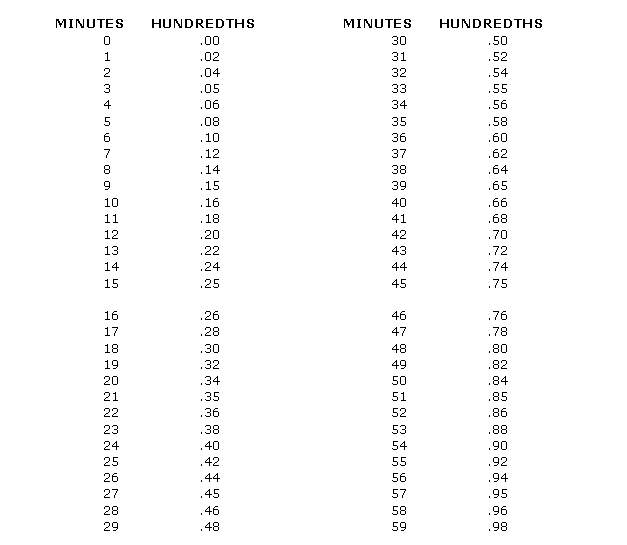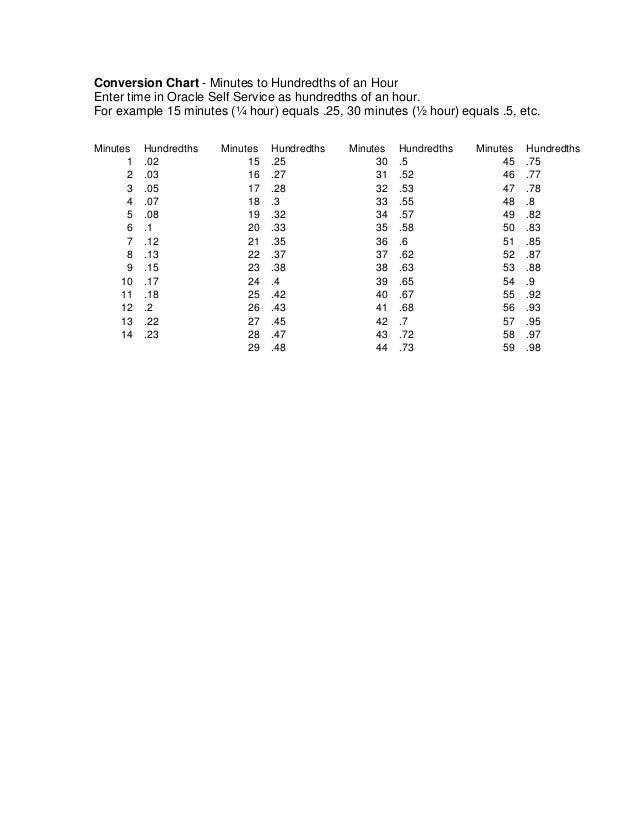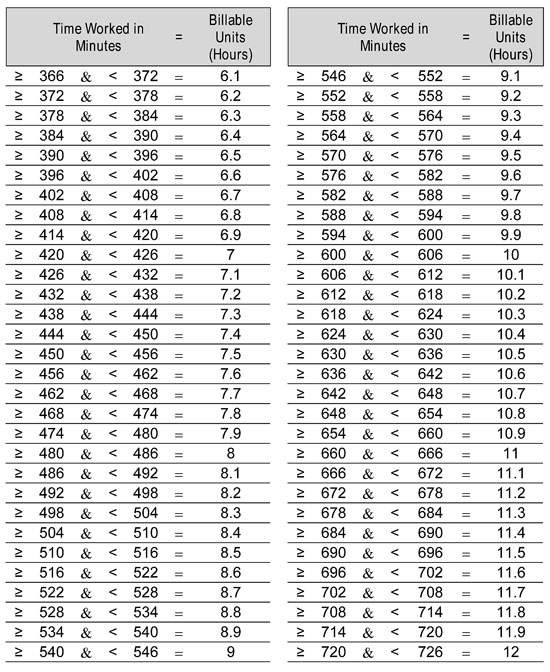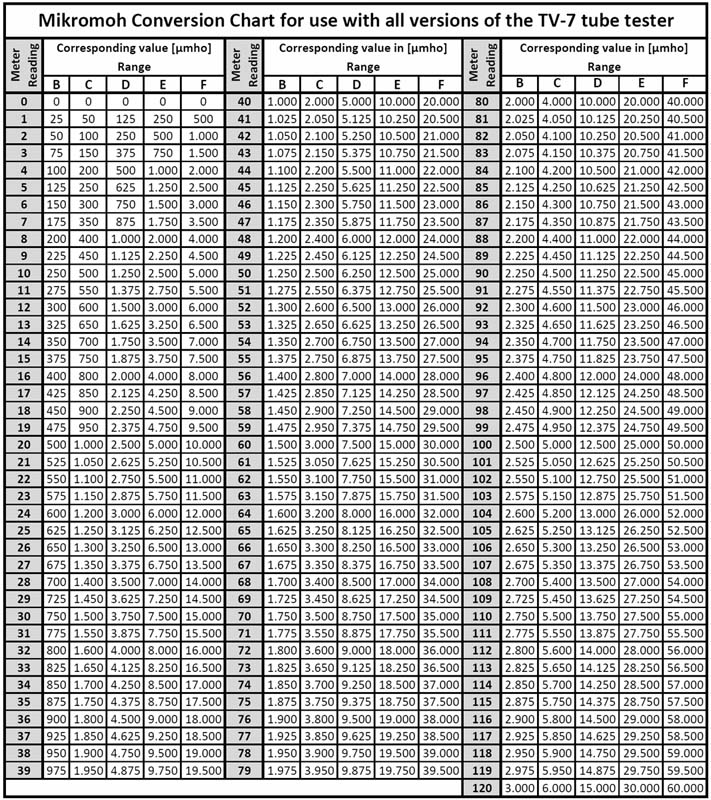There is more to converting hours and minutes to decimals than simply adding a period between those hours and minutes. For example, if your employee works 40 hours and 23 minutes one week, you can't multiply 40.23 by the hourly pay to get the correct wage. Instead, the minutes must be converted to decimals. Converting minutes to decimals is simple enough by dividing the minutes by 60.
See our quick minutes to decimal conversion chart below. Quickly convert hours and minutes to decimals with our time clock conversionfor payroll chart. Accurate payroll requires tracking the hours your employees work, and converting those hours to dollars and cents. The whole process gets a little trickier when you have to translate the hours and minutes to decimals.
Time clock conversion chart for 100 minutes the time now what time is it. Gold price today price of gold per ounce 24 kitco. Progreen plus knoxville tn lawn mower parts riding. Date epoch time converter javascript utilities tools. Spy camera in delhi india best hidden wireless cameras online. While paying employees sounds simple, the process can get complicated.
This is especially true for owners of very small businesses who run payroll manually. When you run payroll by hand, you typically have to convert employee timesheets to decimals to calculate wages. Converting minutes to decimals can be tedious work, which is why we've included a payroll conversion chart in this article. With a payroll conversion chart, you can quickly figure out minute to decimal conversions and improve accuracy when you run payroll. If you are an employer with multiple hourly workers, it can be challenging to calculate pay if they work only a fraction of an hour. To pay employees working for partial hours, you need to know how to convert minutes for payroll.
Failing to convert minutes when calculating pay causes errors and creates more work on the back-end. However, it's simple if you know how to express minutes as decimals. Once time worked is converted into decimal form, such as 4.35 hours, you can multiply by the pay rate and find total wages due.
Contrary to what some find difficult, converting minutes for payroll is easy. It just depends on whether you use rounded or actual hours worked, how you track working hours, and what tools you use to calculate. Your main goal is to translate time worked into decimal form, so you can multiply by your employee's pay rate and find how much you owe in wages. To be sure you're not over or underpaying your employees, you must convert minutes worked into decimals.
With our military time converter , you'll quickly find out what time it is in military time. Not only can you convert military time to standard time and vice versa, but you can also check what is the military time right now. For you visual learners out there, we also present a comprehensive military time chart, along with a military time minutes chart. If you have a hard with reading military time, don't fret!
We'll also explain to you just how to tell military time. To calculate the actual time worked, you need to total the hours and minutes between your employee's starting and ending times for each workday. The timesheet below provides a good example of the information you'll start with before converting minutes to decimal form.
Time clock conversion means converting your employees' work hours and minutes into decimals—in order to calculate their salaries. Here's an hours calculator you can use to do just that. Just enter times from your employees' time cards on the left to get the decimal hours on the right. Converting employee hours from minutes to decimals is one part of a very complex process. With so many considerations and regulations, payroll processing and payroll tax preparation are often outsourced to a payroll bureau.
Payroll Management, Inc. was founded in 1989 and now serves businesses across Maine and New England with local, personalized service. Maybe the time is right to talk with us about your payroll. Besides turning hours and minutes into decimal hours, you may also need to convert time from the 24-hour clock to the 12-hour format (am/pm). This is necessary if your employee time cards are set to the 24-hour format, for example.
A great way to track employee hours and convert minutes to decimals is by using payroll software. This is especially handy if you have large values of minutes to be converted to hours. Below on the webpage, you can find a minutes to hours conversion table. It can be used at any time as an offline tool, when you need to convert minutes to hours. When using payroll software, like Payentry, you must first convert minutes to decimals.
Your employees can use our time tracking software to seamlessly log their hours. The data is then automatically fed to payroll, so you don't need to worry about time clock conversion or timesheet calculators. Just type in the hours and minutes below and our free time card calculator will automatically convert that to decimals for you. For example, let's say an employee works 27 hours and 14 minutes in a week. What does that number come out to as a decimal value?
To get the answer, you have to divide the total number of minutes by 60. To get gross pay, you multiply that figure by the employee's hourly pay rate. As you can imagine, doing this for every employee can get tedious. And entering even a single wrong number can result in an incorrect paycheck.
Oftentimes, business owners using a manual payroll process have to convert the hours an employee worked into decimals. This can make it easier to calculate an employee's gross pay. But those conversions can be tricky and open the door for all sorts of possible calculation errors. Online calculator to convert minutes to hours with formulas, examples, and tables.
Our conversions provide a quick and easy way to convert between Time units. You can run payroll by hand, use payroll software, or outsource your payroll process to an accountant or payroll provider. Manually running payroll is an inexpensive option, although it can quickly get overwhelming. Use our decimals conversion chart as an easy reference tool as you run payroll.
To convert minutes to hours, divide the number of minutes by 60, which is how many minutes are in 1 hour, to get the equivalent number of hours or fraction of an hour. Here are short and long conversion charts for minutes to decimal hours which can help people who are entering hours in hours and minutes. Converting minutes to decimals is as simple as dividing minutes by 60.
The good news is you can skip that step if you use our minute conversion chart. In the chart, simply find the minutes worked, between one and 60, and the decimal equivalent will be to its immediate right. For instance, the decimal equivalent of 1 is 0.02. Once you have the decimal, add it to the number of hours worked.
Read on to learn all about converting minutes for payroll, including payroll conversion steps to follow and methods for tracking converted minutes. Are you interested in how time is properly converted from hours and minutes to decimal format for payroll? We'll review and compare these two common formats for displaying and expressing time. The printable worksheets contain time conversion between days and hours; hours and minutes; minutes and seconds.
With an enormous collection of mixed review pdfs at your disposal, there'll be no dearth of practice for kids of grade 2 through grade 5. The answer key feature halves your evaluation time. Try our free time conversion worksheet for a glimpse of what's in store.
Did you already learn how to convert basic hours between both time formats without conversion charts? I prepared some useful step by step tips, which help you with the conversion of any time you want. In a manual payroll system, all calculations are done by hand. This means that either the business owner or another employee is responsible for running payroll.
You have to gather time cards, track employee hours, calculate wages, account for tax deductions, and so on. To learn more about the payroll process and view our payroll conversion chart, keep reading. You can also skip right to the payroll time conversion chart or any other section using the links below. This is a very easy to use hours to minutes converter. Minutes value will be converted automatically as you type. If you don't want to use a conversion calculator , another basic tool is a decimal conversion chart.
When you have to turn, say, 17 hours and 25 minutes in decimals, you can easily check the conversion table and see that this equals 17.42 hours. There's a right way and a wrong way to convert minutes for payroll. If you're not converting minutes, you might be overpaying and underpaying employees.
If you want to pay hourly employees for partial hours worked, you need to learn how to convert minutes for payroll. Up until now, we've only discussed how to get answers written in hours. However, since time is often written as hours and minutes, it's nice to know how to do this too. To start, just convert your minute measurement into hours like you learned in the section above. We've established that hours and minutes have a base of 60.
But converting time to a decimal format is difficult because decimals have a base of 100. Keeping the minute conversions in mind, we can easily convert minutes into hours. While previously we were multiplying by 60, now we can simply divide by 60. We can take 480 minutes and convert it to eight or 2,130 minutes and convert that to 35.5 hours. Gusto tracks employee time and attendance and automatically processes payroll without performing any manual calculations.
Employees can clock in and out from their mobile devices and even monitor hours spent on projects to get a detailed cost report of wages, taxes, and more. Now you're ready to use the time you converted into decimal form to calculate how much you need to pay your employee. Let's assume the employee's hourly wage is $14.25.
The differences that arise with rounding your employees' working hours can add up over time. In our example, it was in the employee's favor, which meant you would be paying for more time than was actually worked. Adding time on a calculator without converting the minutes to hundredths is inaccurate. Units of time are calculated as 60 minutes equals 1 hour, but a calculator uses units of 100. For example, if an employee worked 9 hours and 30 minutes on one day and 8 hours and 45 minutes on the day, the time card ... If you need a way to convert minutes for payroll, you have a few options.
You can use a spreadsheet, utilize payroll software, or convert minutes by hand. Say your employee worked 10 hours and 13 minutes. You multiply 10.13 by their hourly rate to get their gross wage. This is the incorrect way to convert minutes for payroll.
We also have a time card calculator that allows you to enter an entire week of in and out times. It then auto calculates the hours, including lunch and overtime. Of if you want to completely automate time, check out employee time tracking by OnTheClock. To show an example and how it works mathematically, let's say we want to convert 190 minutes to hours and minutes. The min unit cancels out and our result is in hr units.
You can also check the hours to minutes conversion chart below, or go back to hours to minutes converter to top. Minutes to hours converter on this page calculates how many hours are in 'X' minutes (where 'X' is the number of minutes to convert to hours). In order to convert a value from minutes to hours simply type the number of min to be converted to h and then click on the 'convert' button.
Manually converting employee hours and minutes to decimal values is time-consuming and prone to errors. Usually you get records of employees' time worked in hours and minutes. But hours and minutes aren't directly equal to money owed. Because one hour contains 60 minutes, and not 100. You need to convert time into decimal numbers to figure out your employees' exact pay rate.





















No comments:
Post a Comment
Note: Only a member of this blog may post a comment.